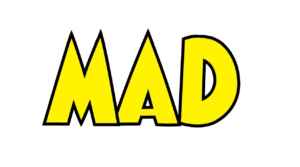This article was written in Feb 2022. Just reposting here.
With Australia’s largest bank offering crypto trading in their mobile app and CBDC gaining interest, is there something more ominous on the horizon knocking on the doors of the decentralised token economy?
The introduction of Bitcoin in 2008 brought the concept of decentralisation back into the spotlight. Decentralised peer to peer technology has existed in many forms prior to Bitcoin with Napster, Gnutella and Bittorrent to name a few. But not only is decentralised technology back, it is flourishing in this new blockchain based token economy and this is important because the war between centralisation and decentralisation is reigniting.
In the early days, banks dismissed Bitcoin technology as a small bunch of enthusiastic, geeky, hobbyists thinking that they could change the world. Very certain it was going to be a fad, the banks ignored us. When it grew to the size of an ant, gnawing at the toenails of the elephant banks, the elephant stomped all over us closing bank accounts often with little reason and little warning.
Then it grew big enough not only to catch more attention from the banks, but believe it or not, some banks started adopting it! Australia’s largest bank, Commonwealth Bank of Australia (CBA), announced that it will become “Australia’s first bank to offer customers the ability to buy, sell and hold crypto assets, directly through the CommBank app.” back in November 2021.
To add a twist to the quote from Mahatma Gandhi, “First they ignore you, then they laugh at you, then they join you*, then they fight you, then you win”. We are at the joining stage but there is a twist, hence the asterix. While joining, the banks are stockpiling their inventory of knowledge and talent and in collaboration with the government and the central bank, are putting plans in place for a Central Bank Digital Currency or CBDC of their own.
China is one of the leaders in CBDC research and development with an estimated $9.7 billion in transactions processed as of October 2021. Sweden and the European Union are also in the exploratory phase along with the Monetary Authority of Singapore (MAS). And while El Salvador may have been the first country to officially classify Bitcoin as legal currency, there are many countries that have banned or restricted the use of cryptocurrencies. Once a CBDC gains traction, and it will, this is where the war begins. Governments can then start to mandate the use of their digital “legal tender”. Does mandate ring a bell?
Back in around 2015 at the birth of Ethereum, the words “programmable money” was touted as the next evolution of money. This gave rise to inventions such as Decentralised Finance or “DeFi” and Non Fungible Tokens or “NFTs” but these are really just experiments that the governments and banks are watching and learning. Once a CBDC starts to develop and become a reality in the coming decade, think of the possibilities of the applications. Governments are already using voucher based systems to only allow those receiving government benefits to purchase essential food items and not alcohol for instance. Having this feature prebuilt into a CBDC will be a government’s dream.
The implementation of a CBDC will be sold with precision. You’ll never have to do your tax again because it will all be automated and accurate. You’ll always pay the right amount of tax. Your data will be protected and encrypted with “blockchain technology” (even though we know data is not really stored on the blockchain), and transparency will be masked in the name of personal privacy. We might even be told that there will be limited “minting” of CBDC and that we all will be giving a voting token that gives us a say in whether more CBDC’s should be printed in times of crisis. This may allow us to play a part in the “decision making” process thereby sharing accountability. Whether or not this happens behind the scenes is another matter.
We are also currently in the age of a mis/dis-information war where large centralised tech companies find themselves in the battlefields often censoring and deplatforming views and conversations that do not conform to the common or accepted narrative. These big tech companies now find themselves more of a public utility than a private company. In the early days of blockchain technologies back in circa 2015, there were talks of a decentralised version of YouTube, Twitter, Facebook, Uber, AirBnb, the list goes on. Promising progress is being made but a lot of work is required in search for the tipping point of when these new versions will become mainstream.
One of the challenges of decentralisation is how decentralised is decentralised? In other words, what is the Degree of Decentralisation or DoD? We think that the Bitcoin network is decentralised until we learn that around 75% of mining was located in China (up until a few years ago). Is a network decentralised if all the nodes are located in Amazon AWS or Google Cloud?
The winning part of Gandhi’s quote still remains in a galaxy far, far away. What is more imminent is the fight. The fight between centralisation and decentralisation. Decentralisation is not straight forward but with pressure from the likes of a Central Bank Digital Currency we need to imagine what such a world would look like and is it something that we want to be part of? The concepts of an open, transparent, inclusive, and permissionless system of networks that is fair will not come easily. It must be fought for much like anything in life.
